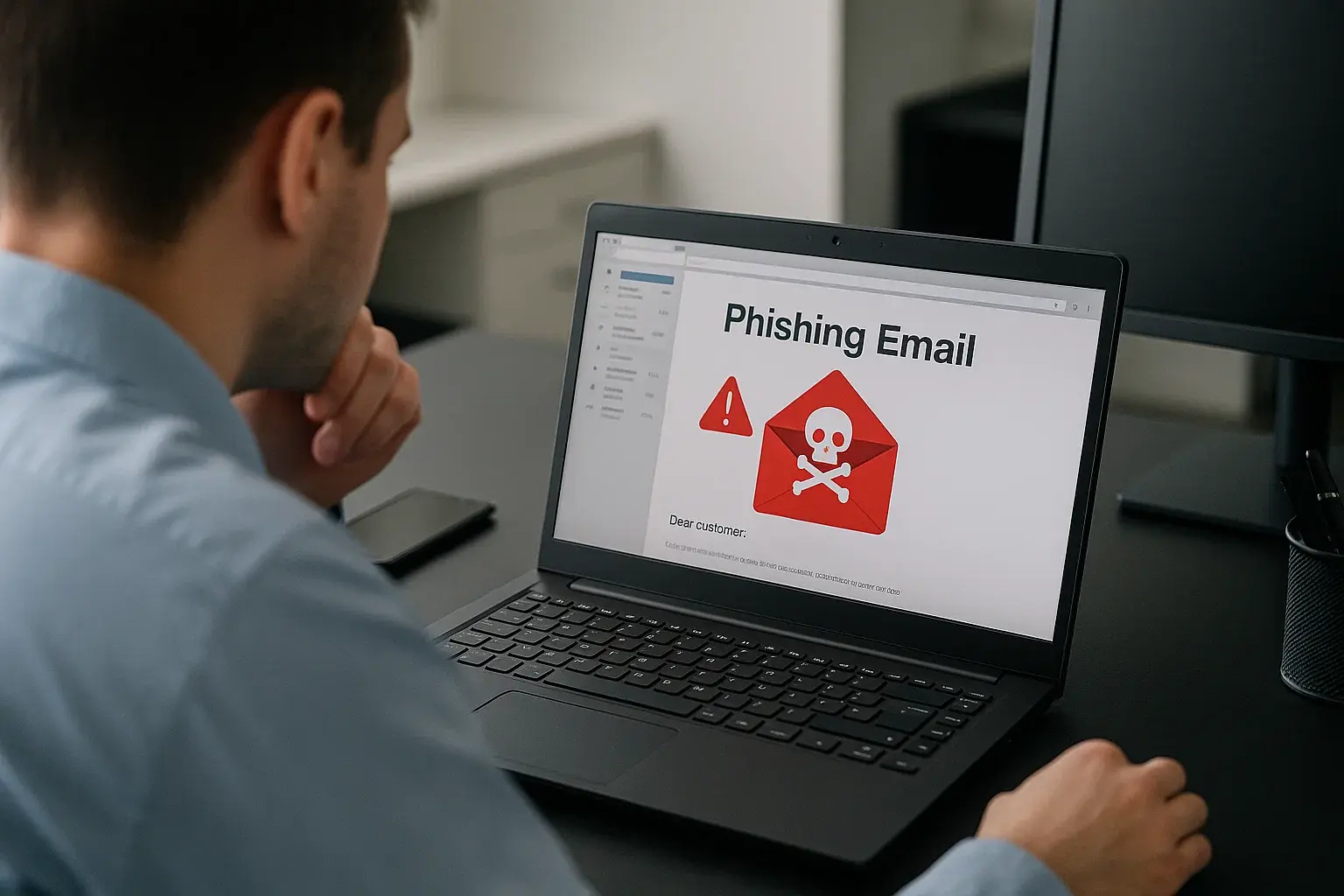Email is an essential communication tool, but it’s also one of the favorite entry points for cybercriminals. Just one careless click on a malicious link can compromise data, accounts, or even the continuity of a business. At TecnetOne, we know that you, as an employee, are the first line of defense. That’s why we’ve created this practical guide so you know exactly what to do if a suspicious email lands in your inbox.
Why You Should Pay Attention to Suspicious Emails
You might think that opening a strange email isn’t a big deal if you don’t click on anything. But attackers are experts at creating trust and disguising their messages to look legitimate. One slip can give them access to sensitive information, login credentials, or even install malware on your device.
Your role is critical: the faster you detect and report a suspicious email, the greater the chance of stopping a potential security incident before it escalates.
Red Flags in Suspicious Emails
The first step is learning to recognize the warning signs. Here are the most common:
-
Suspicious sender: the address doesn’t match the company it claims to represent, or contains typos (e.g., @gmaill.com instead of @gmail.com).
-
Poor writing: grammar mistakes, awkward sentences, or bad translations.
-
Suspicious links: hovering over the link shows a URL that doesn’t match the expected website.
-
Unexpected attachments: especially files with .exe, .zip, or .rar extensions.
-
Sense of urgency: phrases like “act immediately” or “last chance” pushing you to rush.
-
Requests for sensitive data: such as passwords, credit card details, or credentials.
If one or more of these elements show up, treat the email with caution.
Immediate Steps to Take
-
Don’t click on links or open attachments. Even a single click can put you at risk.
-
Don’t reply to the sender. This only confirms your email address is valid.
-
Take a screenshot. It will be useful as evidence when reporting.
-
Verify through official channels. If the email claims to be from your bank, client, or supplier, call their official number or manually type their website into your browser.
-
Report immediately to IT or security. The sooner you act, the faster the company can contain the risk.
How to Report a Suspicious Email
At TecnetOne, we recommend having a clear and simple reporting protocol. If your company already has one, follow it carefully. In general, the best approach is to:
-
Forward the suspicious email to the official security contact (e.g., security@yourcompany.com).
-
Attach the screenshot with details.
-
Indicate if you clicked on a link or opened an attachment (so IT can take extra steps if needed).
Remember: reporting is never overreacting. Even if it turns out to be a false alarm, prevention is always better than cure.
Learn more: ChainLink Phishing: Trusted Domains Used as Threats
What NOT to Do
-
Don’t “test” the email out of curiosity.
-
Don’t forward the suspicious message to colleagues, as someone might open it by mistake.
-
Don’t ignore it assuming “someone else will report it.” Your action matters.
Practical Example
Imagine you receive an email supposedly from your bank saying: “Your account will be suspended if you don’t confirm your details within 24 hours.” It includes a link that says “Click here.”
Looking closely, you notice the sender is @secure-bank-verify.com instead of @yourbank.com. The text has typos, and the link redirects to an unknown URL.
What should you do?
-
Don’t click.
-
Take a screenshot.
-
Report it to IT immediately.
-
Call your bank’s official number to confirm there’s no issue.
That simple process can save you—and your company—from fraud.
The Need for Ongoing Awareness
Knowing what to do with a suspicious email isn’t something you master after a single training session. It requires practice, reminders, and simulations. At TecnetOne, we recommend running phishing simulations and sending periodic awareness messages so employees stay sharp.
Remember: an informed employee is the best antivirus.
Read more: Do you know how to spot a phishing attack?
How to Turn Prevention Into a Habit
Here are some tips to make cybersecurity awareness part of your daily routine:
-
Always double-check the sender before opening emails.
-
If in doubt, be suspicious first, trust later.
-
Make immediate reporting second nature.
-
Share your experience: if you receive a suspicious email, others might be receiving the same.
The Benefits of Acting Correctly
Following these practices protects more than your inbox—it strengthens the entire company:
-
Reduced risk of data leaks.
-
Prevention of malware spread.
-
Faster response time. IT can block malicious domains before they affect more users.
-
A stronger security culture. Every report matters.
Conclusion
Receiving a suspicious email is more common than you think. What truly matters is how you respond immediately and responsibly.
At TecnetOne, we believe your role as an employee is essential: every timely report helps safeguard your company’s digital security.
So next time a strange email arrives in your inbox, remember: it’s not just your security at stake—it’s the security of the entire organization.


